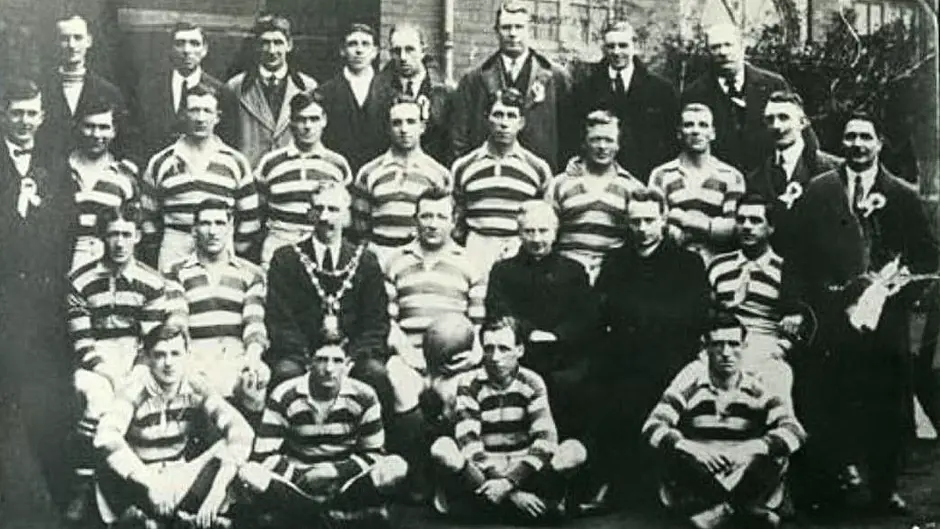BY SAMUEL KINGSTON
WEST Cork has recently seen a rise of rugby talent in both men’s and women’s codes. Across the area, players are progressing through the provincial system.
This season sees the Coombes cousins Gavin and Liam, the Wycherley brothers Fineen and Josh, John Hodnett, Cian Hurley, James French and Jack Crowley all looking for first team action on the men’s team. All from West Cork, all keen to wear the famous red jersey.
As Munster face the Dragons this weekend, it provides an occasion to tell the little-known story of West Cork connections to rugby in Newport, the home of the Dragons.
Shamrock grows along the bank of the Usk river in Newport, Wales. Local folklore says it was brought by the Mudcrawlers. These unfortunate people were among the many Irish escaping from the Famine. They had jumped overboard from their boat to avoid port authorities. As they desperately struggled through the mud, some weakened by hunger didn’t have the strength to make it and were buried where they lay. The boats that brought them had most likely left West Cork.
In July 1848, the Star of the Sea, a Clonakilty boat was observed at Newport. The captain, when questioned, advised authorities that 53 people had already disembarked upstream, concerned at the abuse they would face from Newport locals at the docks. This was the second such incident involving a boat from Clonakilty with the Argyle captained by a man named Driscoll getting into trouble with authorities in February 1848. Other recorded boats in Newport came from Glandore, from Kinsale and from Cork City.
Often, the passengers were told that the boats were heading to America where so many others had gone, now Newport would become their land of opportunity. Newport was an industrial town based around coal and docks, far removed from the agricultural ways of West Cork but the Irish adapted to their new home. Many lived in the Pillgwennlly area down by the docks or Pill as the locals still call it. It was in the docks that most of the Irish worked. It was tough, demanding work. The men needed to be physically strong.
The Welsh love their rugby and the Irish in Pill wanted to play rugby and express their identity and physicality through the game. Newport Hibernians Rugby Football Club was founded in the late 1890s. At the heart of the Hibernians were men whose forefathers had left from the coast of West Cork. Inside two generations the Irish in Newport had gone from having nothing to enjoying success on the rugby field. They won the South Wales Argus League Cup for three seasons from 1897.
The team of 1919/20 is nearly all Irish surnames – Murphy, O’Leary, McCarthy, Casey, Cashman, Collins among them. The Murphys included Con, Harvey, and Dennis. Their people had come from Clonakilty but were now long settled in Newport. They were sports mad, they loved their rugby and playing for the green and white of Hibernians. They also loved their baseball; a local version of the sport that was popular in Newport and Cardiff. They played for the Holy Cross Old Boys team and enjoyed success on the field.
A generation later in the 1960s, it is clear to see that the Irish names were starting to fade from the Hibernians team sheet but some remained such as Murphy and McCarthy. The Irish had integrated and progressed beyond Pill. While people are still proud of their Irish roots the passing of time saw them naturally become more Welsh than Irish. In 1978 the Newport Hibernians, who were now a weak side, joined up with Pill Labour Hall RFC to become Pill Harriers. The Hibernians were consigned to history books and memories. The Harriers took their name from a once prominent club in the area who themselves disbanded in 1947. Among their most famous players was Jerry Shea of Kerry stock who played for Wales on four occasions circa 1920. Shea turned out for the Hibernians around the same time.
Even though the rugby connection has faded in Newport there is still an Irish link through the Pride of Erin GAA club who provide for Gaelic games enthusiasts in particular hurling.
As the Red Army welcomes the Dragons to Thomond Park, it offers an opportunity to reflect on the links between West Cork and south Wales and how rugby helped the Irish settlers in Newport integrate into their new home, the descendants of whom still live there today.
- Samuel Kingston from Clonakilty is currently researching a book on the Irish impact on sports around the world. Thanks to the Newport Local History Society Facebook page who helped with information, in particular Pat Wallace. Thanks to Louise James who provided the photograph. Thanks to Brian Cromwell at Pill Harriers RFC for additional information.










